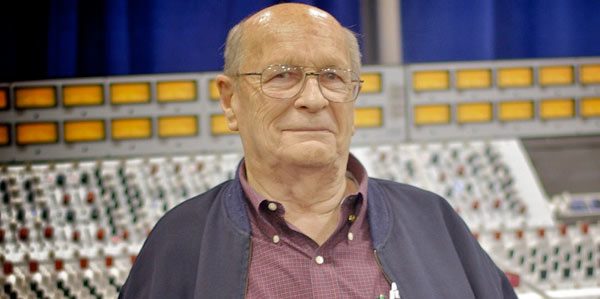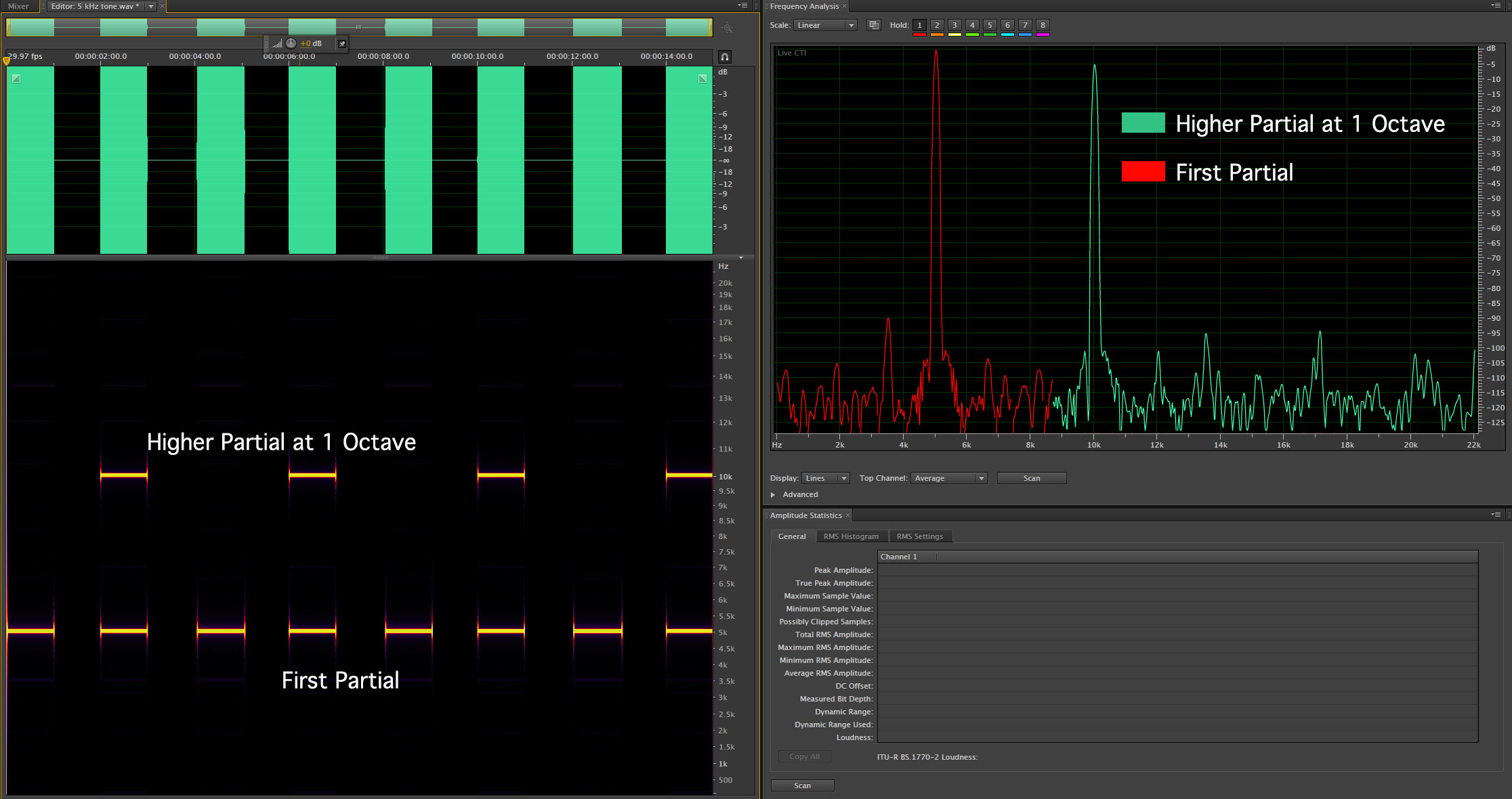Rupert Redux Part I
Rupert Neve is a very important man in the world of recording studios and professional audio. He’s a self-taught electronics wizard and his name is associated with some of the most prized analog recording/mixing consoles in the world. His designs are electronically elegant and known for their special sound.
I had heard that Rupert required his equipment to pass up to 100 kHz audio signals. He was asked about that and was emphatic that bandwidth of that extreme scope was necessary to ensure great audio all the way through the signal chain. He sounds like my kind of guy.
So Rupert designed a study that tried to demonstrate the need to extend our traditional range of human hearing beyond the typical 20-20 kHz. Although, I have been unable to locate the study or even confirm its existence, the simplicity and elegance of this concept captured my attention. I believe that understanding the impact of ultrasonic frequencies is key to moving forward with high-resolution audio.
It bears on a question I was asked by a reader just a couple of days ago. He asked if I’ve carefully listened to CD-Audio, DSD-64 and DVD-Audio and whether I’ve been able to detect differences. I can answer that I have listened to a variety of music discs in these formats (yes, I do have a SACD player!). As I wrote back in April, I was involved in a careful comparison of analog tape, DSD and HD-PCM back in March (here’s the link to the article…Snow Ghost Session. The gathered group listened to the same ensemble, recorded through the same mikes and signal chain to three separate recorders. While the ultimate assessment varied within the group, we all could tell them apart. Mind you, this was using absolutely state-of-the-art equipment. So yes, I’ve listened and can perceive differences. However, this doesn’t mean that the ultrasonics were the cause of those differences.
It could be that the “in-band” (20-20 kHz) character of each of these formats is enough to account for the different “colors” presented in each case. I might add…in answering the gentleman’s question…that my left-brain doesn’t care about the emotional aspects of the formats. I’m come to a place that requires the ultrasonics to be accurately recorded and reproduced EVEN if humans can’t detect the differences through some sort of scientific test. It just seems honest to me. Maybe someday we’ll be able to point to the exact reason why ultrasonics matter…or maybe we won’t ever know. Or just maybe they really don’t matter.
So here’s the rebirth of the Rupert Neve ultrasonic test with a twist. The basic idea is to prepare a number of tones. The first tone will be a simple sine wave tone at a given frequency. The second tone will be the same tone with the octave higher partial added in. The idea is that by adding the next higher partial in the natural overtone series that the “timbre” of the tone will change. But what if the second tone is higher than the range of human hearing? Then theoretically, humans would be unable to determine the difference between them.
This will be my point of departure. And I suppose it’s a test that I can spread around to all of the readers of this site. Of course, if your system is not capable of recreating the higher partials involved in the test, then you won’t be able to tell any difference. But if you can then we should be able to get a pretty reasonable sample.
Se here’s the first step in this process. I have prepared the first pair of tones as a reference. You can download the file from the FTP where all of the free HD-Audio samples are located. (If you haven’t yet visited the FTP site you can ask for the credentials here).
Figure 1 – The spectragram of our reference test tone showing 5 kHz and then 5 plus 10 kHz.[Click to enlarge]
Here is the spectragram of the tones in questions. They are not randomized in this reference set. You can clearly see the pure tone and then the following tone with the higher octave. The fundamental of this example is only 5 kHz…not high be audiophile standards. Take a listen and see if you can tell the difference.
So let’s start the new Rupert Neve study…



I am interested in getting the credentials for the FTP site but the link above is not active 🙂
I downloaded the test WAV file.
On my system, I hear two alternating tones. The first tone is louder than the second one. The first tone seems to have a slightly higher pitch than the second one, but I don’t know if it seems that way only because it is louder. I’m not a musician with a trained ear so I’m not sure exactly what the difference that I’m hearing is.
Interesting test. When I play with the equilizer bands on my music player while playing a song, I can hear differences when I change the 10kHz control. I can’t hear diffences when I change the 16kHz control. Do you have higher test tones, such as 8kHz and 8-16kHz?
Thanks for providing this test.
Correction: My music player equilizer control is 8kHz, not 10kHz.
Mark,
I’m not sure that you will see this since it is an old post and you’re in training! This is interesting. I’ll try some test tones in Audition this weekend when I’m home. My speakers are down about 10db at approximately 33kHz. I would think that this should suffice. My headphones (Grado SR325) are spec’d to 24kHz but have seen no graphs so I can’t guess what the response may be at 33kHz. I’ll follow up.
Blaine
I had a good run this morning with Harry Parry (the iconic street musician that hangs around Venice) but I do see all of the comments to the site. I’ll be preparing some additional sine wave files…but don’t count on your ears to deliver this experience. It very well could be that our whole body needs to receive the frequencies.
That’s a good point and certainly a headphone / speaker comparison might yield something interesting…